Temperature and Visibility
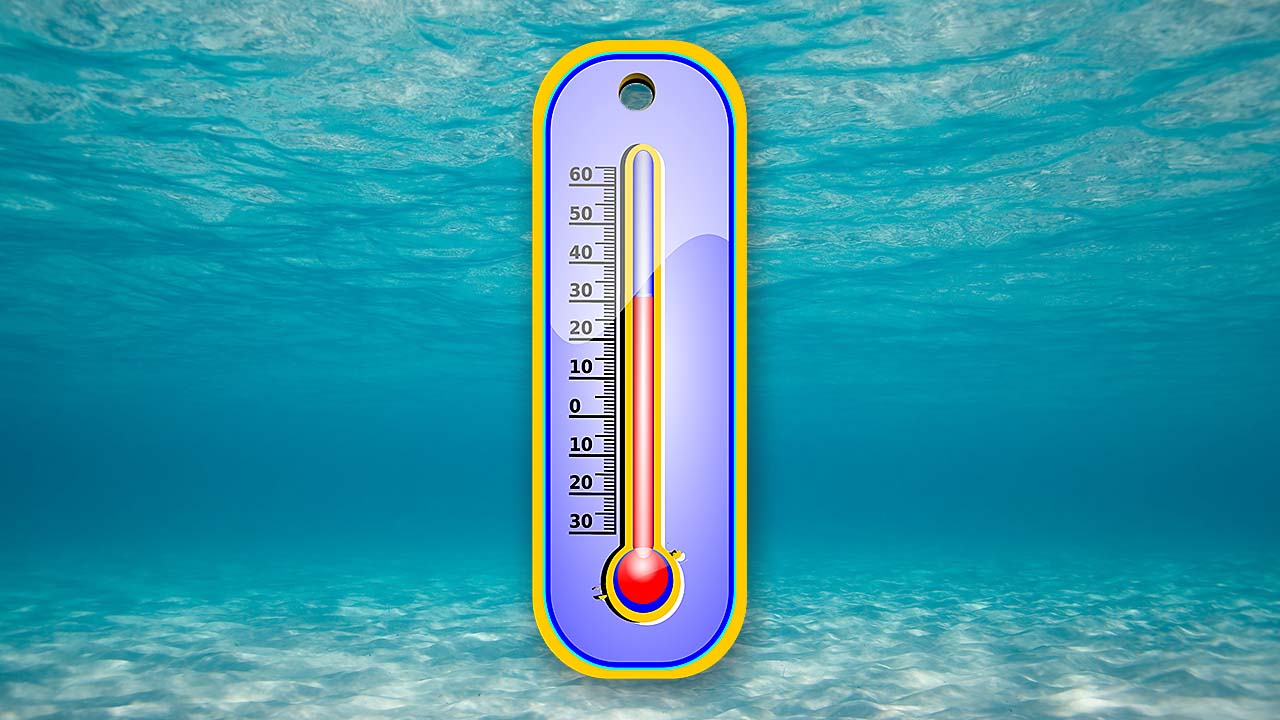
In this section, we discuss:
- Upwellings
- Thermoclines
- Bottom Composition and Visibility
- What causes an upwelling?
- What is a thermocline?
- How does bottom composition affect visibility?
Upwellings
In our earlier discussion of currents, you learned that most currents are caused by wind, tidal movement and waves. Sometimes, these factors work together to produce a phenomenon known as an upwelling.
During conditions of continuous, strong offshore, side shore or side-onshore winds along a coast, warm surface water can be blown offshore and replaced by colder, nutrient-laden water from beneath.
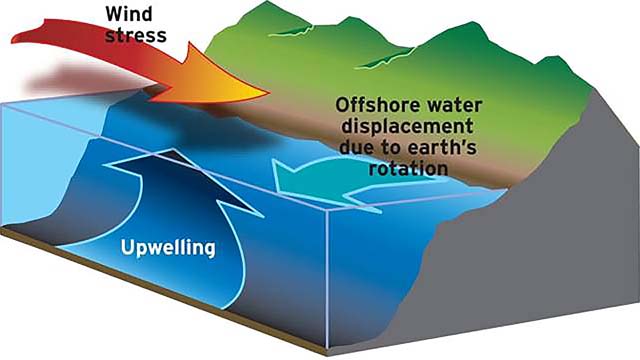
If you dive from shore in large bodies of water, you need to be aware of the possibility of an upwelling — especially if the wind is blowing in an offshore direction. You also need to watch for currents that push you away from shore on the surface and currents that push you toward the shore along the bottom.
Thermoclines
A thermocline, also referred to as a metalimnion, is a thin but distinct layer in an ocean or lake in which the temperature changes more rapidly with depth than it does in the layers above or below. The warm, less-dense water layer above the thermocline is known as the epilimnion. It sits on top of a colder, denser, deeper water layer called the hypolimnion. The thermocline sits between these two layers.
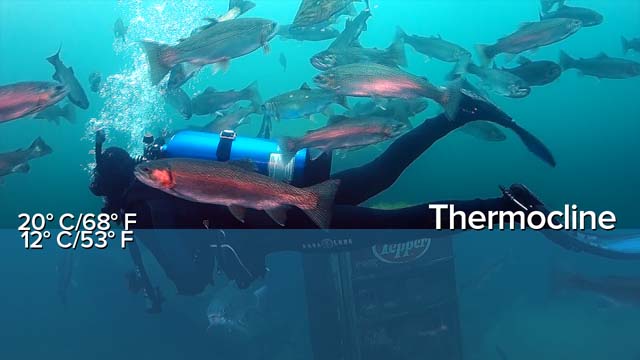
Seasonal weather variations, latitude and local environmental conditions, such as tides and currents, can affect the depth and thickness of thermoclines. Thermoclines can be semi-permanent or temporary. They can be caused by the heating and cooling of surface water during the day or night, and water movement — especially where warm-water currents move further north during warmer times of the year.
You need to be aware of the presence of thermoclines when selecting exposure protection. In short, you need to dress for the temperature you will encounter during the deepest part of your dive, as opposed to the temperature on the surface. In fresh water, in particular, this difference can be dramatic.
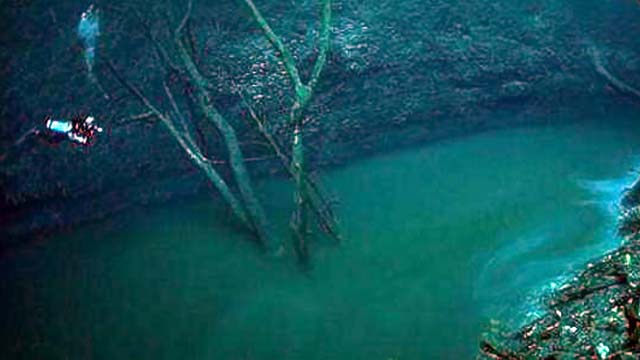
Thermoclines are frequently confused with haloclines. Haloclines are stratifications in a body of water caused by different levels of salinity, with fresh or low-salinity levels on top and high-salinity levels on the bottom. Haloclines are common in water-filled caves near the ocean. Less dense fresh water from the land forms a layer over salt water.
Bottom Composition and Visibility
Depending on conditions, bottom composition can affect visibility which, in turn, may affect navigation techniques and the equipment you use to navigate.
- Coral and rocky bottoms usually offer good visibility since there isn’t much sediment or mud for you to stir up.
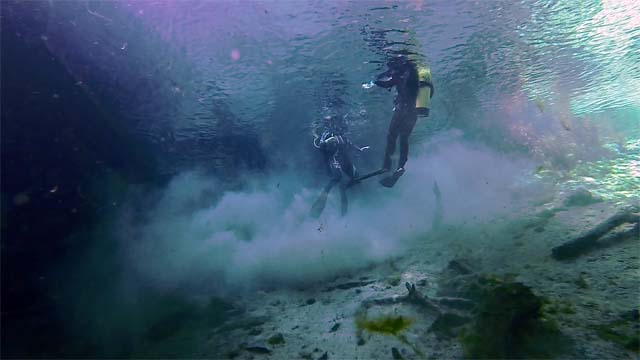
- When you dive in an area with a silty or muddy bottom, practicing good buoyancy control and horizontal trim, and using anti-silting propulsion techniques, becomes even more critical in maintaining good visibility.
- Water movement can also disturb sediment, mud and silt and reduce visibility.
Key Points to Remember
- An upwelling results when offshore winds move warm surface water offshore allowing colder water to move in from below.
- A thermocline is a thin but distinct layer of water in which the temperature changes more rapidly with depth than it does in the warmer, epilimnion layer above or the colder, denser hypolimnion below.
- Bottoms composed of sediment, mud, and silt, reduce visibility when disturbed by divers close to the bottom or water movement.
Learn More on Wikipedia
